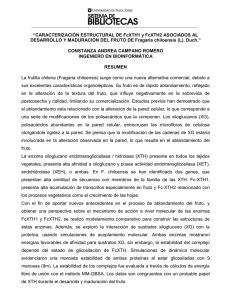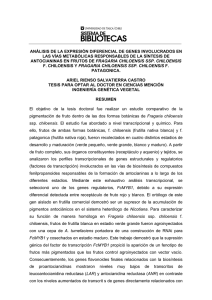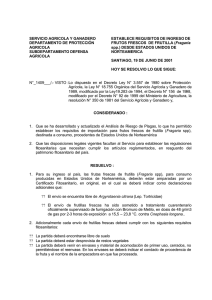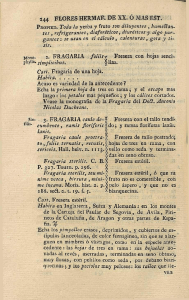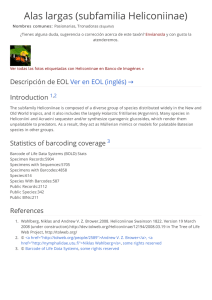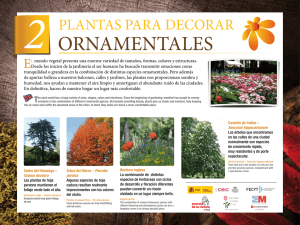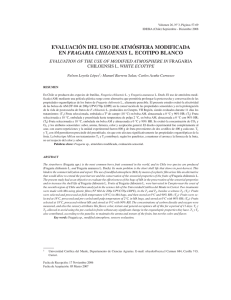fluorescencia del aparato fotosintético en frutilla nativa y comercial
Anuncio
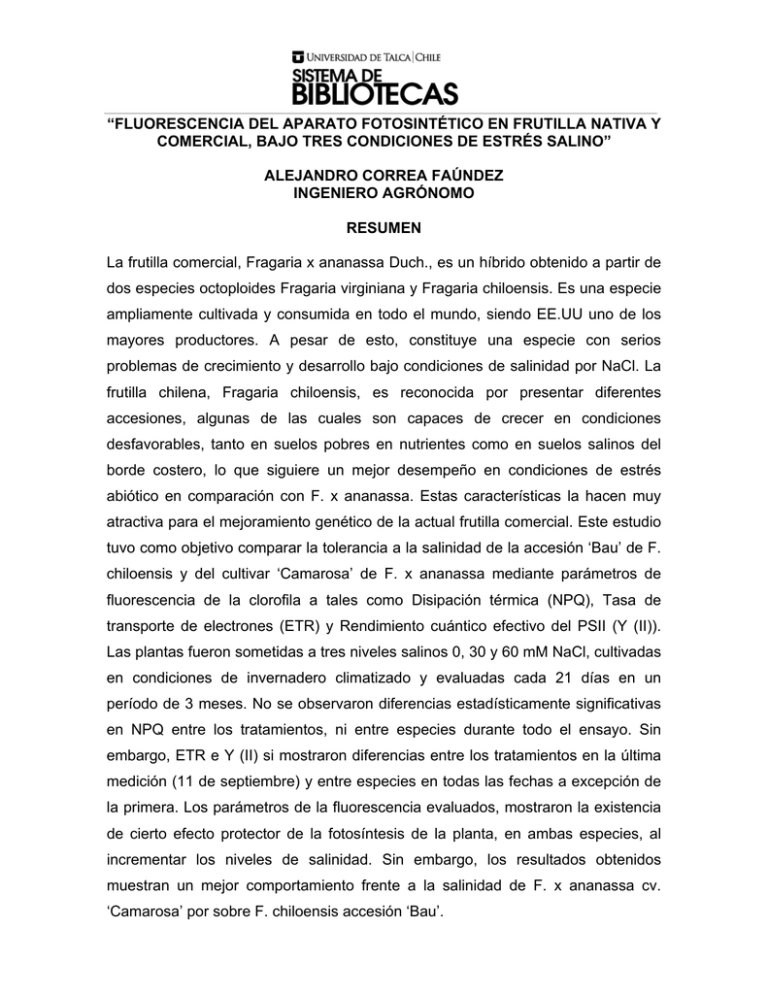
“FLUORESCENCIA DEL APARATO FOTOSINTÉTICO EN FRUTILLA NATIVA Y COMERCIAL, BAJO TRES CONDICIONES DE ESTRÉS SALINO” ALEJANDRO CORREA FAÚNDEZ INGENIERO AGRÓNOMO RESUMEN La frutilla comercial, Fragaria x ananassa Duch., es un híbrido obtenido a partir de dos especies octoploides Fragaria virginiana y Fragaria chiloensis. Es una especie ampliamente cultivada y consumida en todo el mundo, siendo EE.UU uno de los mayores productores. A pesar de esto, constituye una especie con serios problemas de crecimiento y desarrollo bajo condiciones de salinidad por NaCl. La frutilla chilena, Fragaria chiloensis, es reconocida por presentar diferentes accesiones, algunas de las cuales son capaces de crecer en condiciones desfavorables, tanto en suelos pobres en nutrientes como en suelos salinos del borde costero, lo que siguiere un mejor desempeño en condiciones de estrés abiótico en comparación con F. x ananassa. Estas características la hacen muy atractiva para el mejoramiento genético de la actual frutilla comercial. Este estudio tuvo como objetivo comparar la tolerancia a la salinidad de la accesión ‘Bau’ de F. chiloensis y del cultivar ‘Camarosa’ de F. x ananassa mediante parámetros de fluorescencia de la clorofila a tales como Disipación térmica (NPQ), Tasa de transporte de electrones (ETR) y Rendimiento cuántico efectivo del PSII (Y (II)). Las plantas fueron sometidas a tres niveles salinos 0, 30 y 60 mM NaCl, cultivadas en condiciones de invernadero climatizado y evaluadas cada 21 días en un período de 3 meses. No se observaron diferencias estadísticamente significativas en NPQ entre los tratamientos, ni entre especies durante todo el ensayo. Sin embargo, ETR e Y (II) si mostraron diferencias entre los tratamientos en la última medición (11 de septiembre) y entre especies en todas las fechas a excepción de la primera. Los parámetros de la fluorescencia evaluados, mostraron la existencia de cierto efecto protector de la fotosíntesis de la planta, en ambas especies, al incrementar los niveles de salinidad. Sin embargo, los resultados obtenidos muestran un mejor comportamiento frente a la salinidad de F. x ananassa cv. ‘Camarosa’ por sobre F. chiloensis accesión ‘Bau’. ABSTRACT The commercial strawberry, Fragaria x ananassa Duch., is an hybrid obtained from two octoploid species: Fragaria virginiana and Fragaria chiloensis. It is a species widely cultivated and consumed in the world, being EE.UU one of the greater producers. In the other hand, F. x ananassa is a species with serious problems of growth and development under conditions of salinity by NaCl. The Chilean strawberry, F. chiloensis, has different accessions, some of which are able to grow in unfavorable conditions, even around the coastal edge, with high levels of salinity, showing a better performance, compared with F. x ananassa, under this of abiotic stress. This higher tolerance make it attractive for the genetic improvement of the commercial strawberry. The objective of this study was to compare the tolerance to the salinity of F. chiloensis accession ‘Bau’ of and F. x ananassa cv. ‘Camarosa’ in relation to some fluorescence parameters of the chlorophyll a, such as: thermal dissipation (NPQ), rate of electron transport (ETR) and effective photochemical quantum yield of PSII (Y (II)). The plants were grown under three saline levels (0, 30 and 60 mM NaCl), cultivated under controlled conditions and evaluated every 21 days during three months. No significant differences in NPQ between treatments, nor between species were observed throughout the trial. However, ETR and Y (II) showed differences between treatments in the last measurement, and between species on every evaluation with the exception of the first. The evaluated fluorescence parameters, showed the existence of certain protective effects on plant photosynthesis, in both species, when increasing the salinity levels. Nevertheless, the results obtained indicate a better behavior under salinity of F. x ananassa cv. ‘Camarosa’ compared to F. chiloensis accesión ‘Bau’.
